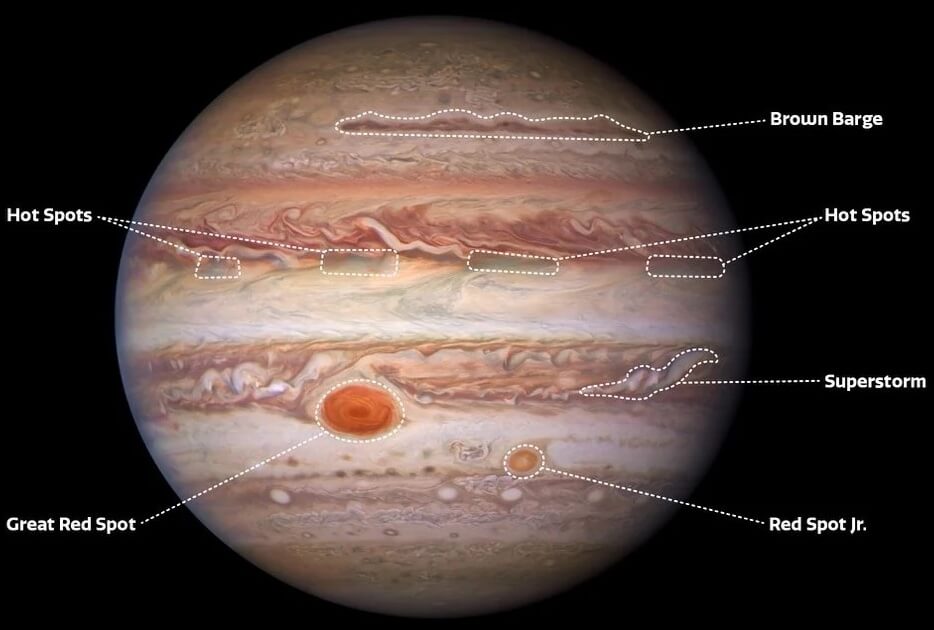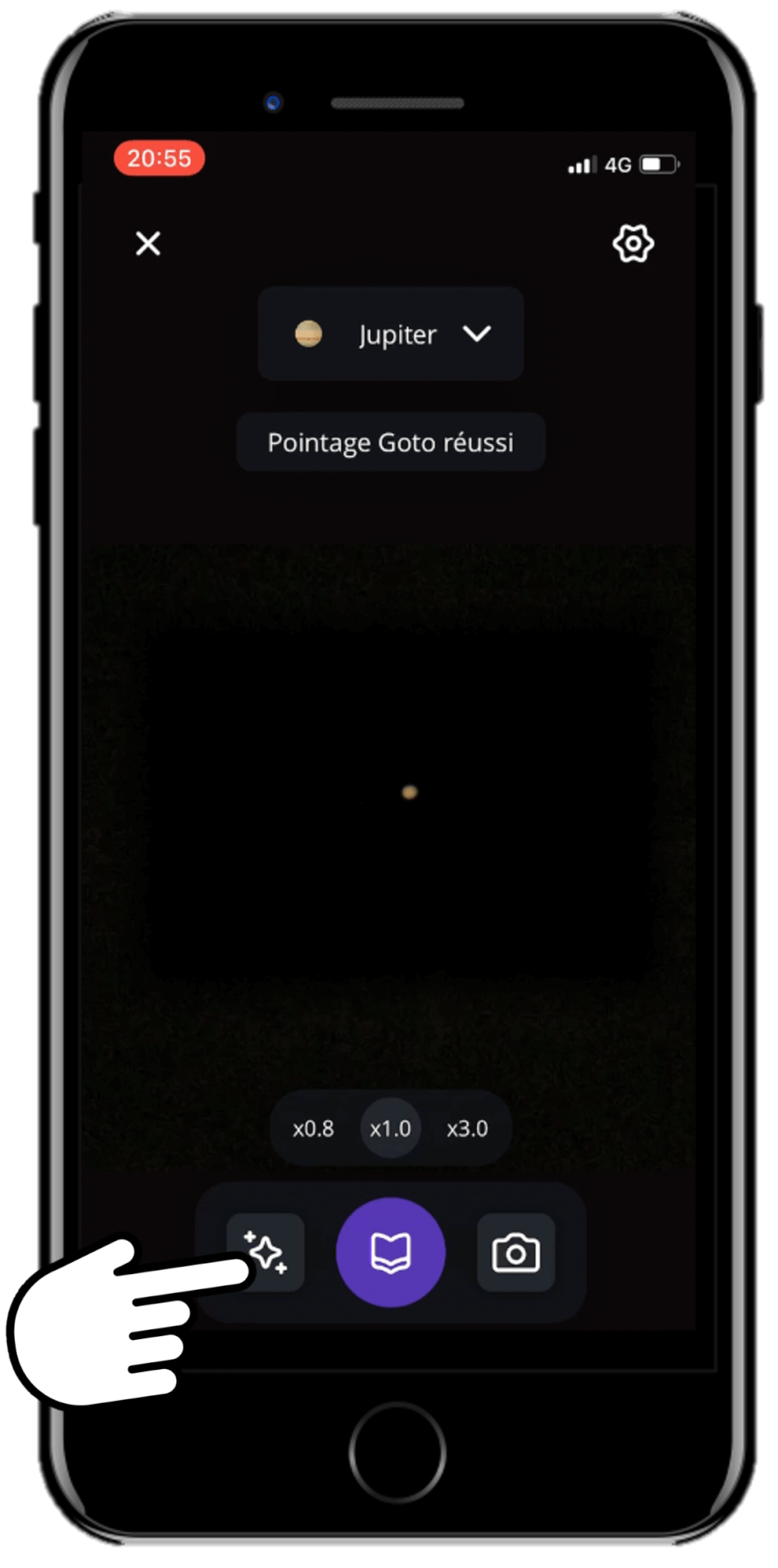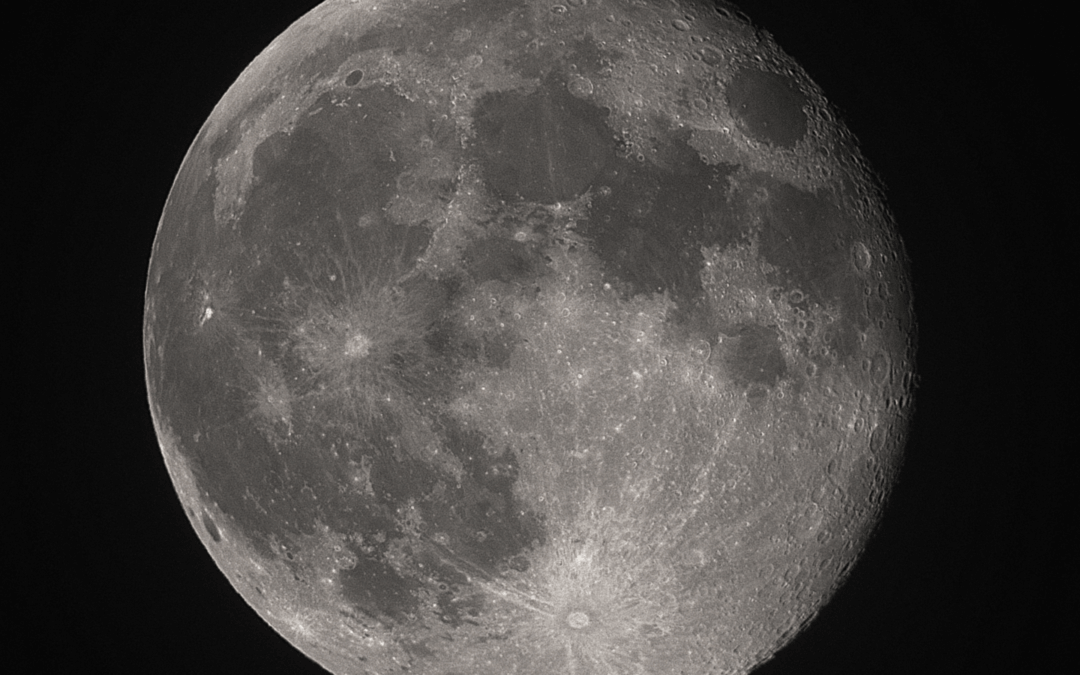Some of the most exciting objects to observe in the universe are also some of the closest to home. The planets of our Solar System, and their many moons, feature a diverse and stunning array of landscapes to explore, from the richly-colored bands of Jupiter to the pockmarked terrain of Mars.
Now, with a new update to the Unistellar app (V2.2), our telescopes will bring those features to life. Our enhanced vision technology, which digitally refines your images to produce crisp views of celestial objects, has just been optimized for many of the planets of our solar system.
Our technology combines multiple images and automatically selects the best one, meaning that it takes just seconds for super-defined images of planets to appear in your view. Due to the brightness of the planets, you can easily see Jupiter, Saturn and Mars right from your backyard, even if you are in a downtown area!
“We are happy to provide this new planetary feature,” says Unistellar Chief Technology Officer Antonin Borot. “Don’t delay to observe them now, they will soon be gone!”


Now, with a new update to the Unistellar app, our telescopes will bring those features to life. Our enhanced vision technology, which digitally refines your images to produce crisp views of celestial objects, has just been optimized for many of the planets of our solar system.
Our technology combines multiple images and automatically selects the best one, meaning that it takes just seconds for super-defined images of planets to appear in your view. Due to the brightness of the planets, you can easily see Jupiter, Saturn and Mars right from your backyard, even if you are in a downtown area!
“We are happy to provide this new planetary feature,” says Unistellar Chief Technology Officer Antonin Borot. “Don’t delay to observe them now, they will soon be gone!”
See the Planets of Our Solar System Like Never Before
It’s just in time, too, as a few of the most popular planets will be easily visible in the next few months. Starting in December of this year, Mars will be in opposition, something that only happens once every 26 months. During this time, the planet is exactly opposite the Sun from Earth, and almost as close as it ever gets — the perfect time to see it!
Jupiter and Saturn are also shining brightly in the early evening from now until early 2023, making these jewels of the Solar System perfect targets for backyard stargazing. Jupiter in particular makes for an ideal target for planetary observation. With a Unistellar telescope, you’ll be able to see the planet’s distinctive bands and Great Red Spot in full color, including the swirls of gas that move swiftly over its surface. Because Jupiter’s atmosphere rotates quickly, each view of the planet is unique — if you take an image of the planet every 15 minutes, you’ll get a new picture every time.

Jupiter is a gas giant, and its atmosphere is perpetually stormy. The Great Red Spot is actually a massive hurricane-like storm bigger than the entire Earth, which has been continually spinning for at least 200 years. The alternating bands on Jupiter’s outer atmosphere are called Belts (dark bands) and Zones (light bands). Zones represent gas moving upward from the interior, while Belts represent gas falling inward. Jupiter is not our closest neighbour, but because the ratio of its size versus its distance from Earth is greater than that of other Solar System objects, Jupiter will appear larger than any other planet in your telescope.
Observe Stunning Planets with Your Unistellar Telescope
Observing planets with a Unistellar telescope is easy. Smart telescope technology means you can select a target, such as Jupiter or Saturn, with the Unistellar app and the telescope will automatically point to it in seconds. Select Enhanced Vision from the app, represented by the starry icon, and the magic will happen in a few seconds: You’ll see a zoomed-in view of the planet with its colors and details standing out clearly.
If you’re observing planets, make repeated observations for an added treat. Small variations in atmospheric turbulence mean each observation will be different, so try on different nights for different results. Our best tips:
- It’s a good idea to observe when planets are higher than 25° in the sky, as there will be less atmospheric disturbance.
- At the beginning of your observation, check the collimation and the focus of your telescope.
- Use the in-app joystick to make sure the planet is in the center of your screen, where the optical quality will be best.

Further readings
3 Reasons to observe this month
Every month, discover three unmissable celestial events to observe with your Unistellar telescope.
Observing Eclipses on Jupiter: Cosmic Spectacles Through a Telescope
The latest Unistellar App Update, version V3.0, is now live. Explore a smooth stargazing experience !
Unistellar Community Included In Multiple Scientific Papers
Did you know Unistellar Citizen Astronomers are often cited in published scientific papers? Find out how you can contribute too!
What Are the Names of All the Full Moons in 2024?
Discover the enchanting names of the full moons in 2024. Delve into the unique character of each lunar spectacle and embrace the allure of the night sky.
New Unistellar App Update: Version 3.0
The latest Unistellar App Update, version V3.0, is now live. Explore a smooth stargazing experience !
What to Observe This November: Open Star Clusters and More
These Halloween deep-sky objects will add some light to those dark, spooky nights. Treats, tricks, and telescopes await!






